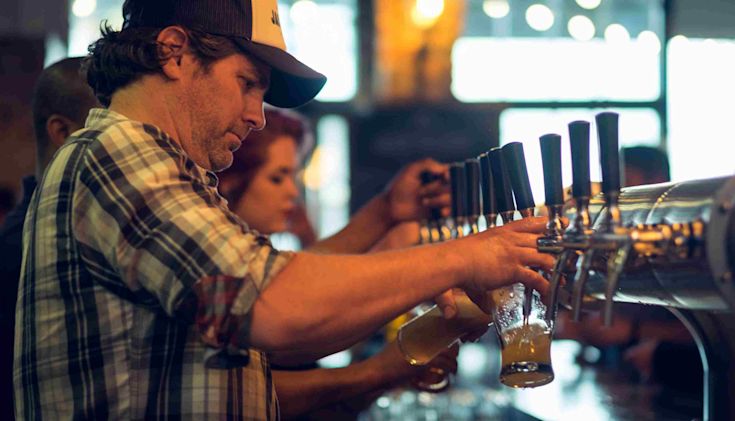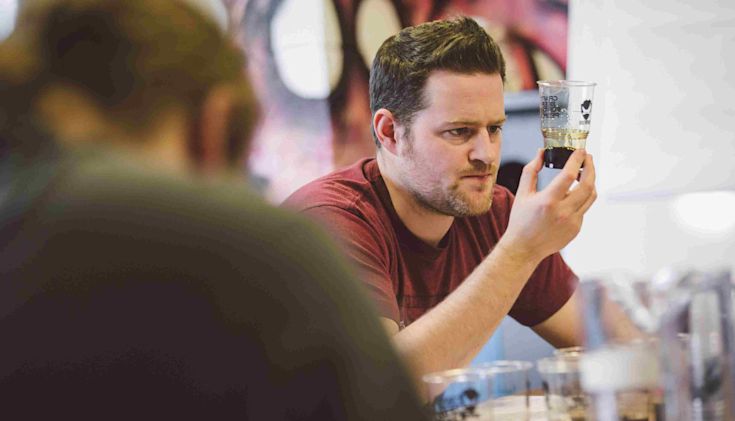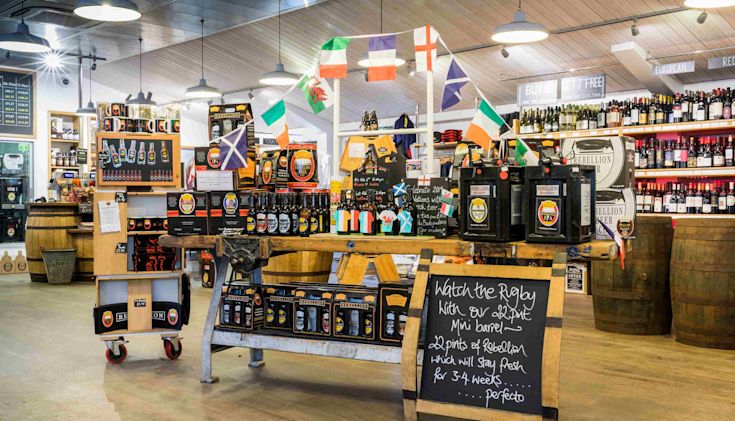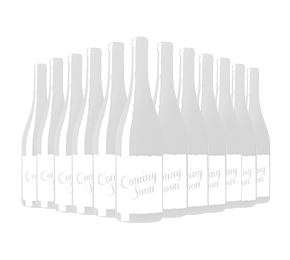Chat with Vinny
IPA (India Pale Ale) is one of the most popular beer styles, loved by craft beer enthusiasts. Learn all about IPA and discover the different styles in our handy guide.
What exactly is IPA?
The ever-popular IPA is the poster child of the craft beer movement. For most craft breweries, IPAs form part of their core range, and they're popular as a collaboration beer between breweries. But while not all IPAs are the same, they are all worth exploring as part of any craft beer journey.
For some people, IPAs are a taste adventure that sees the power of hops deliver flavours ranging from the robust to the fruity. For others, IPAs distinct hoppiness and strong alcohol content can mean they're not enjoyed to the full. Many will stay away from IPAs believing them to be bitter but most modern versions have extremely low bitterness and are quite fruity. However, as IPA craft beer spans a surprising gamut of flavours, styles and approaches, that makes it difficult to pigeonhole and wonderful to explore.
What does IPA stand for?
Let's start with the basics. IPA stands for India Pale Ale.
It's a broad type of pale ale that is extremely drinkable and has surged in popularity thanks to the passion of American craft breweries, made famous by West Coast IPA. But while IPA is something of a touchstone for today's craft brewers, its origins can be traced back to 18th Century England and a time of trade routes, high seas and rapid colonisation.
Like many of the world's greatest inventions, India Pale Ale was originally brewed to solve a problem.

During the era of the British Empire, soldiers and colonists in India hankered after a flavoursome beer. The high humidity and heat made it too hot to brew beer locally, and beer imported from England faced a lengthy journey by sea.
In general, beer had a hard time making the journey due to less than perfect sanitation and fluctuating temperatures.
A new brewing solution was required – and London's brewers rose to the challenge in an early example of craft beer experimentation. They increased the amount of hops in the boil and raised the alcohol level, which together with the addition of dry hops to the casks before shipping, doubled down on preservation. The beer arrived fresh and – most importantly – drinkable.
The road to a modern IPA
Among the first brewers to export pale ale to India was George Hodgson's Bow Brewery in London. Its strong pale ale, known as barleywine or October wine, was loaded with freshly plucked hops. It became the template for IPA, and their exports saw the IPA soar in popularity.
Brewers in Burton-on-Trent soon followed. The process of adding just-picked hops, coupled with the area's hard water resulted in a bright, golden ale with a pleasant and refreshing hop character that outshone – literally – the gloomy porters of the time.
It was a brewing revolution, and brewers everywhere leapt on the IPA bandwagon.

But it wasn't until the 1980s that the IPA evolved from its status of establishment ale to become the darling of the craft beer movement. That was in part down to the ingenuity of American craft brewers, especially in the Pacific Northwest, which is home to the greatest variety of hops in the world – from unexpectedly fruity to laidback soft and citrus flavours.
With American craft brewers looking for a challenge, they focused their attention on reinventing long-forgotten ale styles – and IPA was firmly in their sights. With an abundance of hops, US craft brewers dialled it up to 11, with breathtaking hop profiles and huge strength resulting in divergent IPAs such as the Double IPA.
What is IPA vs pale ale?
IPA is a hoppier, more potent variant of a pale ale, and that's down to two things: the amount of hops, how they are introduced and their typically higher alcohol volume.
Hops play a pivotal role in IPA. Each hop variety has its own distinct character and taste profile, and are added to the brewing process at different stages, in different combinations. Adding hops early in the process when wort is being boiled gives bitterness. Later boil additions focus on flavour and post fermentation additions, called dry hopping, and infuses aroma.

IPA styles
There isn't just one type of IPA, and that makes exploring them such an interesting venture. Here are just a few:
English IPA – Still a very balanced beer with malt and hops in unison. English IPAs will use, you guessed it, English varieties of hops like East Kent Goldings or Fuggles. These tend to give more earthy, woody and sometimes spicy character avoiding the tropical characters of the newer styles. ABV are also much more in check compared to their US style cousins.
Session IPA – ideal for longer drinking sessions, with lower ABV than standard IPAs. A session IPA only refers to the strength and has no affiliation with the style.
West Coast IPA – say hello to the 80s revival, characterised by lots of US hops giving it a bitter kick and citrusy aromas.
East Coast IPAs - tend to use a slightly fruitier yeast strain than West Coast IPAs and shift the hop additions towards the back end of the boil and in the dry hop. This creates more aroma and far, far less bitterness. East Coast IPAs typically use many more hops than their West Coast counterpart.
New England Style IPA – A cousin to the East Coast IPA but with a hazy appearance and more residual body creating a fuller mouthfeel, late hopped for low bitterness and maximum aroma.
Milkshake IPA - A subset of the New England Style IPA. These beers are quite hazy in appearance and typically add lactose, an unfermentable milk sugar found in milk stouts, to add a bit more body and a gentle underlying sweetness. Huge late hopping with tropical and citrus aroma hops complete the picture.
Double / Imperial IPA – More hops. More alcohol. Expect a big, bold, beer with some higher alcohols starting to contribute to the flavour.
Triple IPA – This is an IPA taken to the edge, and with an abv of up to 10%, it wanders into wine territory.
Black IPA – A contradiction in terms. Thanks to the use of darker malts, the result is a dark, more brooding IPA. This beer can resemble a hoppier, more bitter porter but drier to add to the refreshment aspect.
IPA flavour, look and aroma
So, what should you expect when to sip an IPA, and what does IPA stand for when it comes for flavour?
The first thing that will hit you is the aroma, and you'll smell hops right from the start along with citrusy, fruity and pine scents in tandem with malty tones. The taste range will surprise you, depending on the beer – from tropical fruits and herbs to citrus or even pine profiles. Fruit flavours are certainly crowd-pleasing, and bitterness can range from phoning it in to properly strong.
Colours still typically retain their golden lustre, with a spectrum that is cheerfully lemon-like to sunset orange and even dusky dark, depending on the malt.

How to serve IPA
Beers typically aren’t great right out of the refrigerator. Give one about 10-15 minutes to just take the edge off but still cold enough to be thirst quenching – this isn’t a bitter! Aim to drink IPAs early on or close to the bottle or canning date – this is not a beer that keeps well as hop flavours fade over time.
You don’t want to lose all the aromas you’re paying good money for, so look for glass that tapers in near the top to focus aromas to your nose and allows you to give it a swirl to awake the volatiles.
What food goes with IPA?
IPA goes well with all types of food that plays off its bitterness, so serve with fried or salty foods. For a more nuanced approach, pair citrus IPAs with grilled or BBQ foods – burgers and fish are good. More hoppy flavours should be paired with creamy, spicy food – think Thai curries and Indian food.
Remember, bitterness accentuates heat and maltiness quells it. Want to tear up? Have a West Coast IPA with a spicy curry and get a rush of endorphins.
And there you have it. Hopefully a better understanding of what does IPA stand for – not just literally – but also in terms of its history, taste, styles and how to serve it. Cheers!
About the author
Steve Rumble
When Steve first started writing for Laithwaites, dry rosé wasn’t a thing in the UK, the only Malbec we stocked was French and hardly any Brits could pronounce Rioja. Things have changed but Steve still loves telling the great stories behind our wines. He holds the WSET Level 4 Diploma and loves a good Provence pink or an oaky Chardonnay. Steve has sports writing experience and is our go-to writer for all things Laithwaites and England Cricket.

